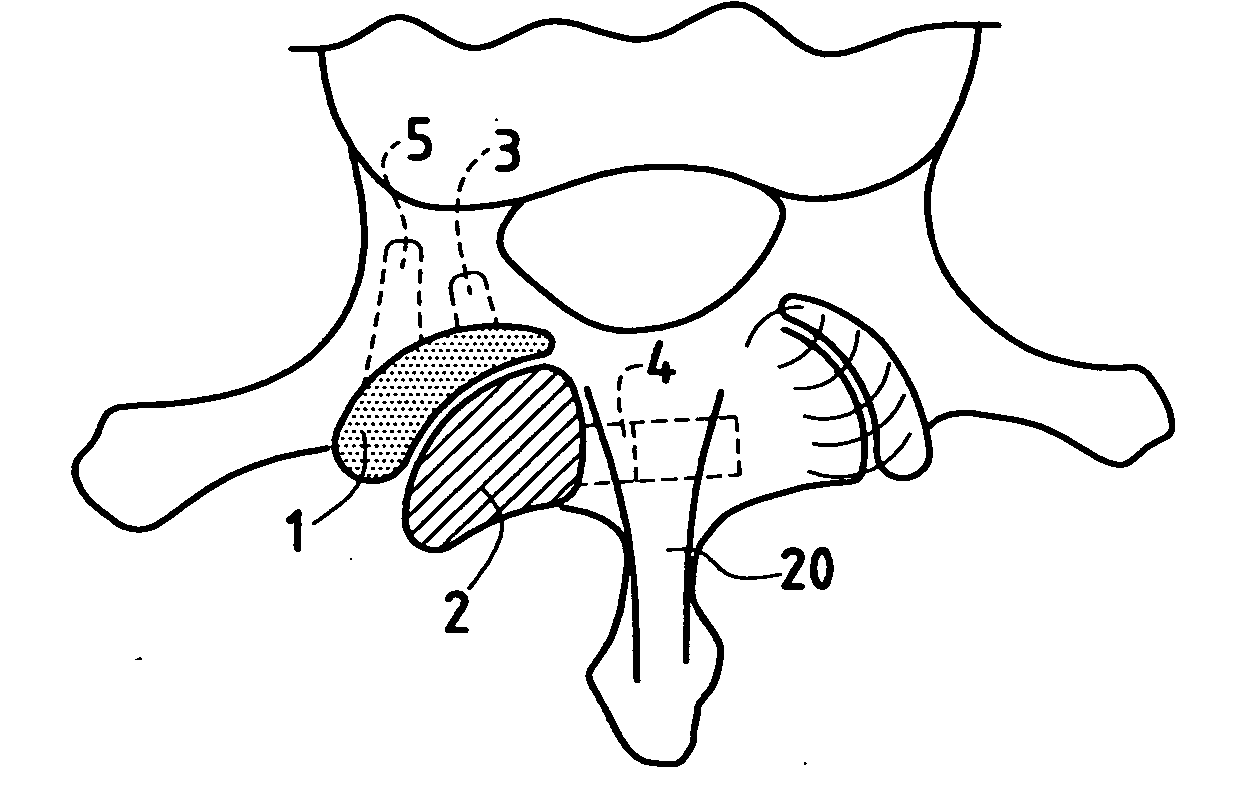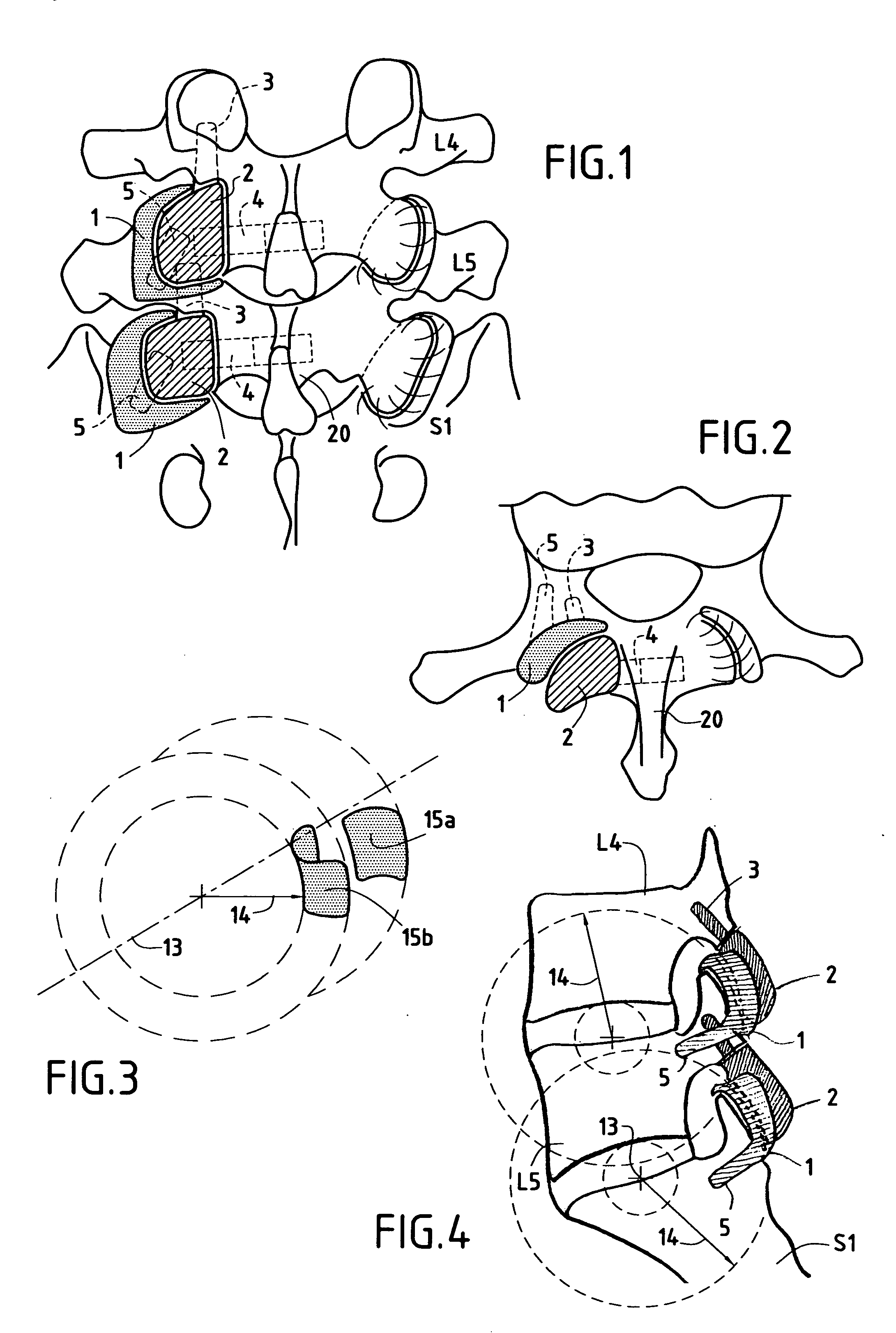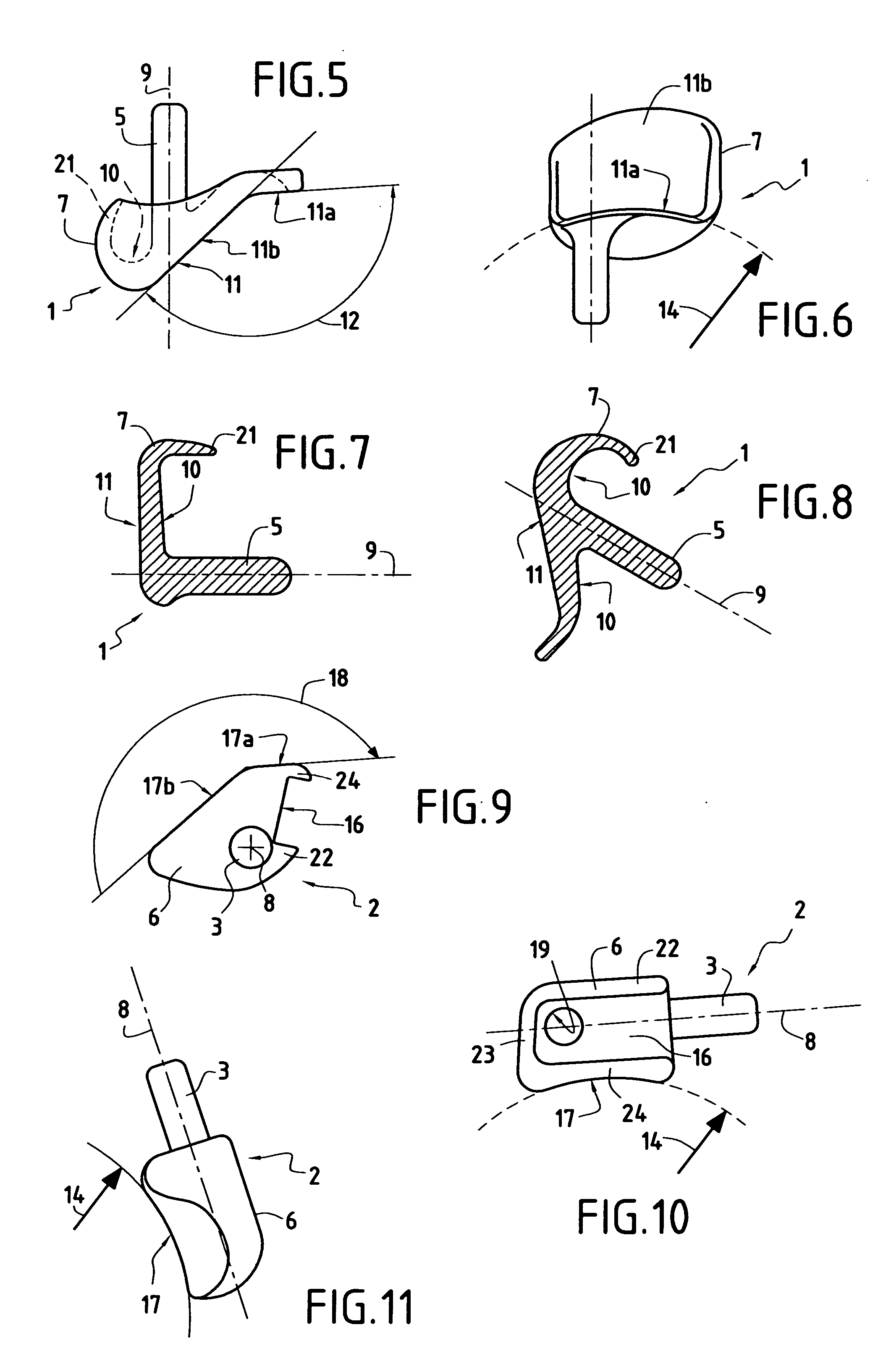Posterior vertebral joint prosthesis
a technology prosthesis, which is applied in the field of posterior vertebral joint prosthesis, can solve the problems of increasing pain for patients and trauma, difficulty in ensuring quality bearing, and difficulty in ensuring that bearings are placed with quality, so as to improve the contact area of the bone, improve the effect of anchoring and improving the effect of the result of the member
- Summary
- Abstract
- Description
- Claims
- Application Information
AI Technical Summary
Benefits of technology
Problems solved by technology
Method used
Image
Examples
Embodiment Construction
[0029] Although the invention is described below in association with the lumbar portion of the spine, the invention is applicable to the posterior joints of dorsal and cervical vertebrae as well.
[0030] With reference to FIGS. 1 and 2 in particular, a left or right posterior vertebral joint is replaced by using an anterior prosthesis 1 referred to as a “first” prosthesis, and a posterior prosthesis 2 referred to as a “second” prosthesis. The anterior prosthesis 1 is fixed on a vertebra such as L5 or to the sacrum S1, while the posterior prosthesis 2 is fixed to the vertebra situated immediately thereabove, such as L4 or L5, respectively.
[0031] With reference to FIGS. 5 to 18 in particular, each of the prostheses 1 and 2 comprises a body 6, 7 and a cylindrical anchor rod 3, 5 integrated in the body and elongate along an axis 8, 9.
[0032] With reference to FIGS. 5 to 8 and 12 to 15, the body 7 of the anterior prosthesis 1 is defined to a large extent by two opposite surfaces: a surfa...
PUM
 Login to View More
Login to View More Abstract
Description
Claims
Application Information
 Login to View More
Login to View More - R&D
- Intellectual Property
- Life Sciences
- Materials
- Tech Scout
- Unparalleled Data Quality
- Higher Quality Content
- 60% Fewer Hallucinations
Browse by: Latest US Patents, China's latest patents, Technical Efficacy Thesaurus, Application Domain, Technology Topic, Popular Technical Reports.
© 2025 PatSnap. All rights reserved.Legal|Privacy policy|Modern Slavery Act Transparency Statement|Sitemap|About US| Contact US: help@patsnap.com



